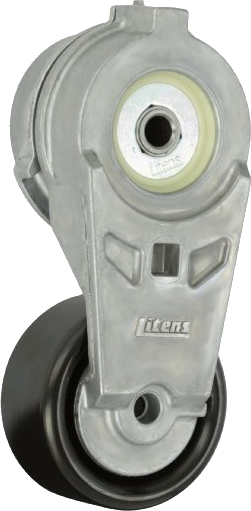Belt tensioners serve two important purposes: they keep a belt tight so that it won't come off, and they allow that tension to be lessened so that the belt can be easily removed and installed during service.
Automatic Belt Tensioners

Most modern engines are equipped with an automatic belt tensioner instead of a manually adjustable one. Not only do they tend to be convenient for whoever happens to work on the vehicle, but they are usually more reliable since they have an inner spring engineered to always provide the right tension; the person installing it can't put it on too tight or too loose, unless a belt with a slightly innacurate length is used.
These tensioners often have either a bolt head or socket that a tool can grab so the tensioner can be twisted, taking the tension off of the belt. This way, the belt may be removed without removing the tensioner or the pulley. Because the tensioner is automatic, the tension doesn't need to be set by installer every time the belt is removed.
- Serpentine Belt
- Engine Basics
- Alternator
- Water Pump
- AC Compressor
- Crankshaft Pulley
- Power Steering Pump
